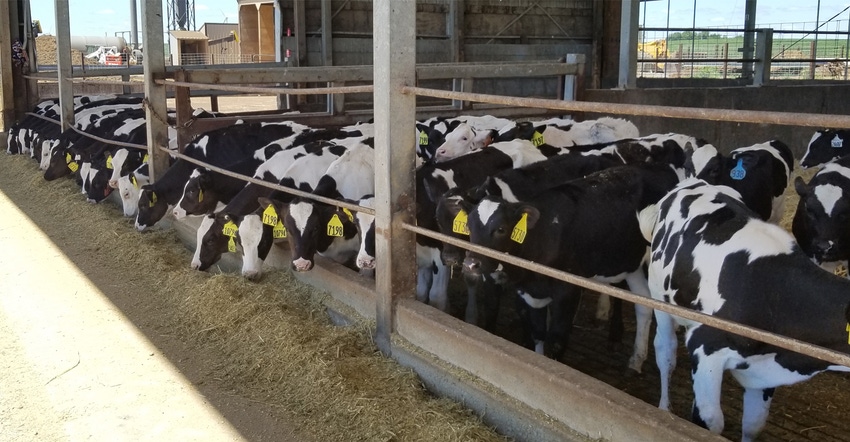July 28, 2021

Heifers represent the future of the dairy operation, bringing genetic progress to the milking herd. Raising heifers is costly, and improving efficiencies in raising them can have a financial impact on the overall profitability of the dairy business.
Based on University of Wisconsin-Madison Extension surveys, the cost to raise a dairy replacement from birth to freshening (or in the case of a custom heifer raiser, the time the heifer is returned to the owner) is about $2,100. With this being one of the highest expenses in the production of milk, managers are looking at ways to reduce costs from this enterprise. The largest factor affecting heifer-rearing costs is age at first calving, which impacts feed, housing, labor and manure.
The goal of breeding heifers is to ensure they enter the dairy herd in a timely manner, ideally at 22 to 24 months of age. Based on UW-Madison Extension surveys, for each month the age at first calving is delayed past 24 months, it costs an additional $2.75 per heifer per day, or $82 per month.
Heifers can calve earlier to reduce feed and rearing costs but must calve at the ideal weight. Heifer maturity, or the heifer’s weight at calving, is an important benchmark in heifer management. It is the easiest factor to measure and track. Weight at calving determines not only the performance of first-lactation heifers, but also lifetime performance. Heifer maturity is important because the onset of puberty is not age-related, but size- and development-related. Heifer maturity depends on a heifer’s nutrition and average daily gain.
Growth benchmarks
Growth is the biggest driver for heifer maturity. One needs to focus on optimal growth rates throughout the heifer’s life. Acceptable growth rates from weaning to breeding for the heifer can set her up to start breeding at 12 to 13 months of age. Growth benchmarks, based on the herd’s mature weight of midlactation cows in the third or fourth lactation, are:
Puberty. 45% of the dairy herd’s mature body weight
Breeding. 55% to 60% of the dairy herd’s mature body weight
Precalving. 90% to 94% of the dairy herd’s mature body weight
Postcalving (first lactation). 80% to 84% of the dairy herd’s mature body weight
Fresh heifers need to be 80% to 84% of the herd’s mature body weight postcalving. This means if the herd’s average body weight of the third or greater lactation cows over 100 days in milk is 1,500 pounds, the precalving (springing) heifer should be 1,350 to 1,425 pounds. If not, heifers will continue to grow during their first lactation at the expense of milk production. Every pound of missing body weight postcalving can cost 7 pounds of milk production.
It is not good practice to subjectively determine if a heifer is mature enough to breed. An investment in a scale can assist greatly in determining the best size to breed heifers, allowing one to analyze their heifer management program. Obtain mature body weights of the third lactation and greater cows at 80 to 120 days in milk to establish the benchmark for the heifer program. Weigh heifers at various stages of growth — birth, weaning, prebreeding, springing and freshening — to determine if you are achieving rate of gain goals.
Kohlman is the Extension dairy and livestock agent in Fond du Lac County, Wis.
You May Also Like




